![17 Top Internal Communication Channels [Infographic] · CMBell](https://img.oercommons.org/160x134/microsite-wi-prod/media/screenshots/a3a04295da22dc3f87a4f3ed67bd02b56bd42d03639bc0f353fc382d5169218f.png)
Infographic explains various internal communication channels and how to use them
- Subject:
- Career and Technical Education
- Material Type:
- Reading
- Reference Material
- Author:
- Delona Bell
- Date Added:
- 05/22/2018
![17 Top Internal Communication Channels [Infographic] · CMBell](https://img.oercommons.org/160x134/microsite-wi-prod/media/screenshots/a3a04295da22dc3f87a4f3ed67bd02b56bd42d03639bc0f353fc382d5169218f.png)
Infographic explains various internal communication channels and how to use them
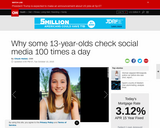
This article discusses the CNN video report #Being13 which was a study of social networking and teens. The article links to the video report and highlights some of the findings.

The Problem: Claims and evidence flow rapidly online. We aid in the spread of misinformation if we don’t ensure that a claim or evidence is accurate before we share it. Luckily, the internet also allows us to check claims and evidence by consulting other sources. Although verification takes time, it helps to ensure that the information we read, use, and share is trustworthy.
This short lesson will introduce students to the importance of checking what other sources say through a relatively straightforward example. Students practice evaluating a claim made on social media by clicking on the provided link to see if the argument in that source matches the claim in the post.
Note: Civic Online Reasoning is motivated by three driving questions: Who's behind the information, What's the evidence and What do other sources say? This lesson is an introduction to one of the main concepts. Registration is required and free.
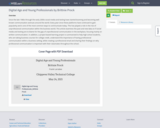
Since the late 1980s through the early 2000s social media and texting have started booming and becoming well known communication avenues around the world. Every year since these platforms have continued to gain popularity and is one of the most common ways to communicate today. This has played a role in the rise of unprofessional communication within the business world. This article examines the past and new data on if social media and texting are to blame for the gap of unprofessional communication in the workplace, focusing mainly on written communication. In addition, a project-based learning project is summarized to help high school students, who are taking business courses for college credit, understand the importance of having professional communication within a business setting, while creating a professional email and sharing their findings on why professional communication is important with their classmates throughout the school.
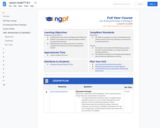
Estimated Lesson Time:
Students will be able to:
-Understand what herd mentality and FOMO are
-Explain how these two cognitive biases impact our personal finances
-Identify practical steps someone can take to combat the influence of herd mentality and FOMO
ANSWER KEY LINKS: Create a Next Gen Personal Finance (NGPF) account to access answer keys. They will be listed under the Full Year Curriculum tab.
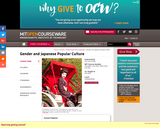
This course examines relationships between identity and participation in Japanese popular culture as a way of understanding the changing character of media, capitalism, fan communities, and culture. It emphasizes contemporary popular culture and theories of gender, sexuality, race, and the workings of power and value in global culture industries. Topics include manga (comic books), hip-hop and other popular music, anime and feature films, video games, contemporary literature, and online communication. Students present analyses and develop a final project based on a particular aspect of gender and popular culture.
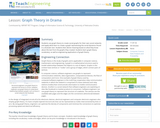
Students use graph theory to create social graphs for their own social networks and apply what learn to create a graph representing the social dynamics found in a dramatic text. Students then derive meaning based on what they know about the text from the graphs they created. Students learn graph theory vocabulary, as well as engineering applications of graph theory.

Students analyze their social networks using graph theory. They gather data on their own social relationships, either from Facebook interactions or the interactions they have throughout the course of a day, recording it in Microsoft Excel and using Cytoscape (a free, downloadable application) to generate social network graphs that visually illustrate the key persons (nodes) and connections between them (edges). The nodes in the Cytoscape graphs are color-coded and sized according to the importance of the node (in this activity, nodes are people in students' social networks). After the analysis, the graphs are further examined to see what can be learned from the visual representation. Students gain practice with graph theory vocabulary, including node, edge, betweeness centrality and degree on interaction, and learn about a range of engineering applications of graph theory.

Article describes career networking techniques to use during high school and college
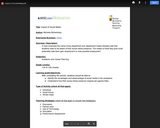
A main emphasis the Verso hiring department and department heads stressed was that students need to be aware of their social media presence. The impact of what they post could potentially help them gain employment or lose possible employment.
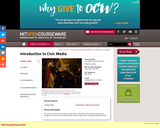
This course examines civic media in comparative, transnational and historical perspectives through the use of various theoretical tools, research approaches, and project design methods.
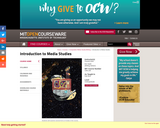
This course provides a critical analysis of mass media in our culture. Various types of media such as books, films, video games, and online interactions will be discussed and reviewed. This course will also evaluate how information and ideas travel between people on a large scale.
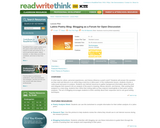
In this lesson, students use blogs to hold discussions about the effect of the factors of culture, history, and environment on Latino poetry.
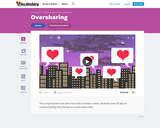
This is a fun and engaging rap video that shares suggestions geared towards teenagers on what they should think about before they post information on social media sites. It emphasises the fact that what you post can be online forever and contributes towards your digital footprint. Here is a list of additional points that are covered in this video.
Would you say what you are posting in real life?Are your posts vain or narcissistic?Are you posting Too Much Information?Keep relationship details to yourselfDon't post cliffhangersDon't complainOnly post appropriate photosCheck your privacy settings on social media sites

Students can use the Profile Publisher to mock up or draft online social networking profiles, yearbook profiles, and newspaper or magazine profiles for themselves, other real people (including historical figures), or fictional characters. The tool could also be used for profiles of nonhuman living creatures, inanimate objects or abstract concepts (e.g., profile of an amoeba, an historical monument, or friendship).

Students will create a comprehensive social media marketing plan for a business. In this project, students are marketers for the business plans created by the Entrepreneurship students in a different class. Teachers may modify this project to suit their needs.
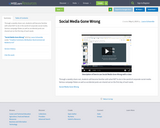
Through a weekly share-out, students will become familiar with what NOT to do in the world of corporate social media. Various campaign flukes as well as accidental posts are shared out on the first day of each week.
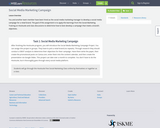
You and another team member have been hired as the social media marketing manager to develop a social media campaign for a retail brand. The goal of this assignment is to apply the learnings from the Social Marketing Training on Hootsuite and class discussions to determine how to best develop a campaign that meets a brand’s objectives.
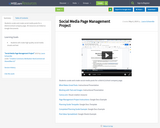
Students curate and create social media posts for a district/school company page. All resources are linked as Google Documents

Estimated Lesson Time: 45 minutes
Students will be able to:
-Understand how social media can influence spending habits
-Analyze marketing techniques from social media and advertising that encourage spending
ANSWER KEY LINKS: Create a Next Gen Personal Finance (NGPF) account to access answer keys. They will be listed under the Full Year Curriculum tab.